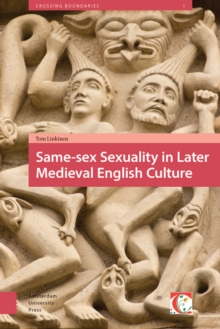
Contacts and Networks in the Baltic Sea Region : Austmarr as a Northern mare nostrum, ca. 500-1500 AD Hardback
Edited by Maths Bertell, Frog, Kendra Willson
Part of the Crossing Boundaries: Turku Medieval and Early Modern Studies series
Hardback
Description
Since prehistoric times, the Baltic Sea has functioned as a northern mare nostrum — a crucial nexus that has shaped the languages, folklore, religions, literature, technology, and identities of the Germanic, Finnic, Sámi, Baltic, and Slavic peoples.
This anthology explores the networks among those peoples.
The contributions to Contacts and Networks in the Baltic Sea Region: Austmarr as a Northern mare nostrum, ca. 500-1500 ad address different aspects of cultural contacts around and across the Baltic from the perspectives of history, archaeology, linguistics, literary studies, religious studies, and folklore.
The introduction offers a general overview of crosscultural contacts in the Baltic Sea region as a framework for contextualizing the volume’s twelve chapters, organized in four sections.
The first section concerns geographical conceptions as revealed in Old Norse and in classical texts through place names, terms of direction, and geographical descriptions.
The second section discusses the movement of cultural goods and persons in connection with elite mobility, the slave trade, and rune-carving practice.
The third section turns to the history of language contacts and influences, using examples of Finnic names in runic inscriptions and Low German loanwords in Finnish.
The final section analyzes intercultural connections related to mythology and religion spanning Baltic, Finnic, Germanic, and Sámi cultures.
Together these diverse articles present a dynamic picture of this distinctive part of the world.
Information
-
Available to Order - This title is available to order, with delivery expected within 2 weeks
- Format:Hardback
- Pages:296 pages, 18 Illustrations, black and white
- Publisher:Amsterdam University Press
- Publication Date:28/06/2019
- Category:
- ISBN:9789462982635
Information
-
Available to Order - This title is available to order, with delivery expected within 2 weeks
- Format:Hardback
- Pages:296 pages, 18 Illustrations, black and white
- Publisher:Amsterdam University Press
- Publication Date:28/06/2019
- Category:
- ISBN:9789462982635










